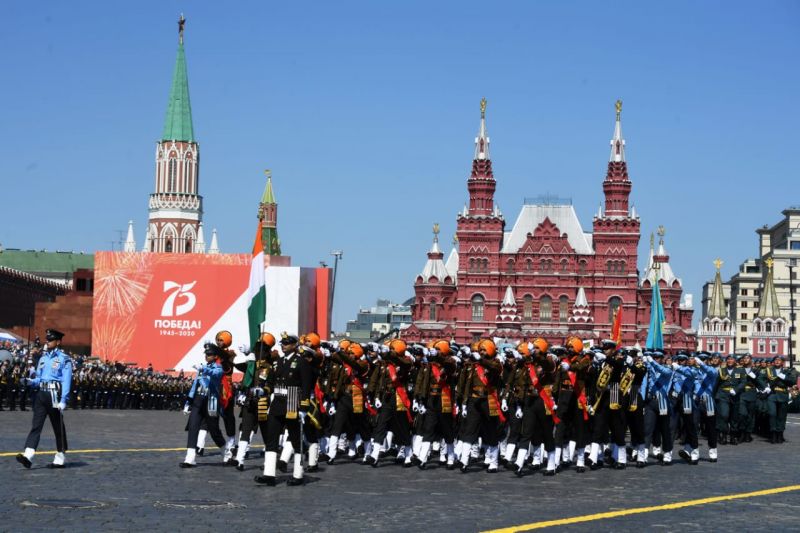India needs to improve perception management
By Brig N K Bhatia (Retd)

According to information available in open domain, the present Indo-China standoff began on May 5/6 astride the Pangong Tso lake and multiple other locations along the Line of Actual Control (LAC). Everyone was stunned to see the visuals of opposing soldiers pushing, jostling, and engaging in fist-fights and use of batons and non-military methods to pin down their adversaries.
The initial scuffle turned into dispute at numerous points, leading to speculation of troop build-up and physical clashes between the two opposing sides with injuries to soldiers.
Reports of troop reinforcements, bringing in of heavy equipment, pitching of tents and increased military activities were reported on the Chinese side especially in Eastern Ladakh, Galwan Valley being the prominent area of standoff. Some incidents of stand offs and intrusion, aggressive patrolling, transgression into Indian Territory continued over the next four weeks.
To put an end to the standoff along LAC, a meeting of Commanders at Corps level was held on June 6 to resolve the issues between the two sides. Indian Ministry of External Affairs put out a cryptic press release stating that both sides had agreed to peacefully resolve the situation in border areas and will continue the military and diplomatic engagements to resolve the situation and to ensure peace and tranquillity in the border areas.
Meanwhile, as a follow up to the high level meeting, disengagement between the two sides took place at certain points. The situation in the Galwan valley, however, flared up leading to serious clashes between the two sides resulting in heavy casualties on both sides. While India lost 20 soldiers, including the Commanding Officer of 16 Bihar, the casualties on the Chinese side have not been forthcoming.
During the six weeks, beginning May 5/6 to June 15, there was no official communication from the Indian Ministry of Defence or Army Headquarters about the situation along LAC, nature of standoff, details of scuffle or injuries to soldiers.
Lack of any official communication unleashed an information overload of the kind not seen on visual media. Similarly, print media made their claims on the developing situation at LAC. The social media became another arena for expression of views and viewpoints.
One of the most disturbing sentences one had to hear on visual media or read in print media was …my sources within the army confirm”-a shameful spectacle and an ignominious reference for any soldier to be referred to as a “source” peddling information during period of national crisis.
The actions of media and reporters also raise disturbing questions about their engagement during national security crisis by both the Army and the government. Why should stories pertaining to such an important national issue that concerns every citizen of India and attention of global audiences be sourced to "unknown army or official sources" or attributed to faceless "senior government officials who ask not be identified"!
Is this the sign of a major democracy that aspires to being a regional power and has attention of global community? Everyone realises that such unsubstantiated media speculation on matters of national security leads to rumour mongering. By good measure, a section of population believes that both army and government have something adverse to hide.
Indian Army’s public information is handled by Additional Director General Public Information (ADGPI). Over the years, the ADGPI has become one of the most popular sites on social media with millions of followers. Anyone looking for information relating to Army, will want for an authentic source for information and the ADGPI has more than established its credibility to fulfill this role. During the current crisis, however, the ADGPI failed to provide any update on the occurrences, resulting in all information coming through unverified handles.
Similar is the case of Ministry of Defence, media machinery that failed to provide any information on such a matter of grave national security. In an era of open-source intelligence and proliferation of “soldier- journalists" armed with a laptop and cell phones, denial or obfuscation only helped to spread misinformation which was neither in national interest nor was anyone any wiser.
During the current Indo-China standoff it was thus, extremely important to give a correct perspective on Chinese claims on Indian Territory and their moves. Incidents which happened post-June 16 too needed a detailed account because citizens were fed unconfirmed tales of their valour, leaving more questions than the answers.
The present crisis requires that the nation be taken into confidence as we, unlike China, are an open society and a democracy. Security cannot be allowed to become a blanket to hide incompetence. Maybe taking a clue from Kargil crisis of 1999, we could have revived the evening joint briefing by representatives from two most important organs of the government, the Ministry of External Affairs and Army Headquarters for a daily or a periodic update on events. A media address by political leadership, aware of the details, would also have been even better.
As Aeschylus,the Greek play writer wrote about twenty five centuries earlier after seeing it himself during Persian invasion of Greece, “In war, truth is the first casualty.” But in the current times when media’s reach is omnipresent, it would have been prudent to peddle truth rather than give air to half-truths to satisfy the appetite of a billion people starved of information.
*Author is Indian Army veteran and views expressed here are personal.




